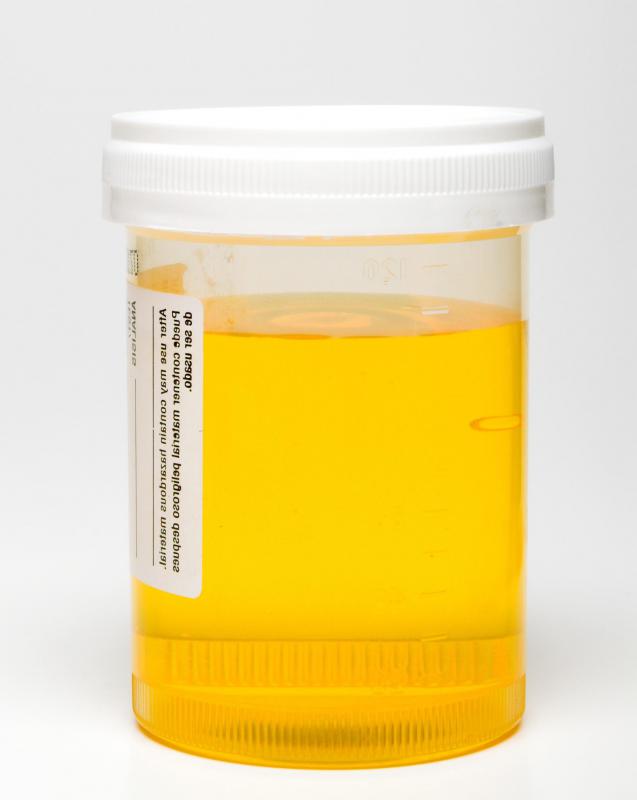At TheHealthBoard, we're committed to delivering accurate, trustworthy information. Our expert-authored content is rigorously fact-checked and sourced from credible authorities. Discover how we uphold the highest standards in providing you with reliable knowledge.
What is Staphylococcus Saprophyticus?
Staphylococcus saprophyticus is a bacterium in the genus Staphylococcus that is most commonly identified in urinary tract infections (UTIs). People colonized with this organism can be treated with antibiotics to kill the bacteria and usually make a full recovery unless they have compromised immune systems or unusual complications develop. These bacteria are resistant to some common antibiotics, which is why getting a culture is important for treating a urinary tract infection, to confirm that the appropriate medication is being prescribed.
This bacterium is one of the Staphylococcus organisms classified as coagulase-negative, meaning that it does not produce the protein coagulase. The distinction between coagulase-negative and coagulase-positive organisms is a common division used to describe different types of Staphylococcus bacteria. Laboratory testing can show whether a bacterium is producing the protein, and this information can be highly relevant to diagnosis and treatment, helping clinicians narrow down the identification of a bacterium more quickly.

Many healthy individuals carry some Staphylococcus saprophyticus around with them, especially around the anus and on the skin. These bacteria are not harmful, as long as they do not enter the body. If a cut or scratch allows Staphylococcus saprophyticus to penetrate, however, the bacteria can start to breed, creating an infection for the patient. As the immune system responds to the bacteria, the area grows hot and inflamed and signs of infection will be observable.

People with urinary tract infections caused by Staphylococcus saprophyticus usually experience a burning or itching sensation when they urinate. The lower body can also feel bloated and uncomfortable and people may feel like they need to pee, but be unable to produce urine. The sensation of dripping after urination may also be felt. Both men and women can develop infections with this bacterium but it tends to be more common in women.

Poor hygiene can be a contributing factor in the development of an infection. People with UTIs sometimes attempt home treatment by drinking lots of fluids, especially acidic ones like cranberry juice, or by consuming probiotic bacteria to fight the infectious ones. However, this is not necessarily advised, as some organisms will resist home treatment and the infection may progress to a dangerous stage. A doctor can take a urine sample and send it to a lab for analysis to determine the cause of an infection and recommend possible treatment options. In the case of Staphylococcus saprophyticus, antibiotics to fight the bacteria are usually prescribed.
AS FEATURED ON:
AS FEATURED ON:

















Discussion Comments
@frosted – You are so right. I went through a period in my 20s where I often had frequent urinary tract infections. I have learned some preventative measures that have helped me and the only two UTIs I have had since then have been because I wasn’t practicing prevention.
These are a few preventative measures that I have taken. Always drink plenty of water it helps to flush out the bacteria. Urinate frequently, every three or four hours minimum.
Do not drink things that irritate the urinary tract like caffeine and carbonated beverages. Avoid feminine hygiene products such as sprays, deodorants, powders and douches; they are irritating, too.
Keep refined foods to a minimum and drink unsweetened cranberry juice. Although cranberry juice will not cure a UTI it can help to prevent it.
Ask your doctor and/or research more about it on the Internet. I found a good article on the Dartmouth College Health Service site.
This is a good article and I agree that a urinary tract infection (UTI) is nothing to ignore and trying to treat it at home can pose a health risk. If you are having any of the symptoms mentioned in the article you should consult your doctor.
Another difficult thing about UTIs is that once you get one, in general you are more susceptible to get them in the future. Whether you have had UTIs in the past or not there are some specific measures you can take to prevent them.
Post your comments